Koshchey ‘The Immortal’: Strong And Wise Ruler Of Darkness In Slavic Mythology
A. Sutherland - AncientPages.com - In Slavic folklore, this nature spirit is known as' Koshchey the Deathless' or 'Koshchey, the Immortal.' Still, it has many other very similar names (Kashey, Koschei, Kostiy, Kościej), varying from Slavic culture to another.
Koshchey the Deathless by Ivan Bilibin, 1901. Public Domain
In Slavic folklore, this nature spirit is known as' Koshchey the Deathless' or 'Koshchey, the Immortal.' Still, it has many other very similar names (Kashey, Koschei, Kostiy, Kościej), varying from Slavic culture to another.
He is always portrayed as an elder hunched over, with a long beard and gray hair. At the same time, he is physically and spiritually vital for his weak-looking appearance.
Koshchey is the ruler of darkness. He commands the forces of darkness and masters this art to absolute perfection, allowing him to control the souls and bodies of the dead.
Some regard him as the dragon, and others suggest he is a man because there is no detailed description of his character.
In ancient Russian beliefs, Koshchey is an evil sorcerer with a terrifying appearance, often described as sitting naked on a magic horse galloping through the wildness.
Koshchey can change his voice to charm and induce sleep when necessary. He is also a shape-shifter and can take the form of a whirlwind or a storm wind.
He is a nature spirit representing the destructive powers of nature.
This powerful prince of darkness can fly and suddenly appear from nowhere, accompanied by dark clouds, thunder, and lightning, or he can come under cover of a mist or fog and fly through the air. During the battle, he has been known to lick the venomous parts of his body and bite his challenger, thus causing intense pain and immobility.
Fond of stealing beautiful women, often the brides of the heroes, Koshchey, the prince of darkness and powerful sorcerer, made many enemies among the warriors. He is an elusive master; he can be a smooth talker who can turn on a charming voice and get easy female company. It is pretty challenging to kill Koschey.
"You cannot kill me," Koschei often sneers. "My heart does not lie in my body." He is known as 'deathless' or 'immortal.'
Indeed, it is believed that his life force, or, as he calls it, his "death," is outside his body, hidden in an unknown and inaccessible place.
Sometimes his "death" may be hidden in the point of a needle inside the duck's egg. Although he seems invincible, Kotschey may die if the hero discovers where the egg containing his life force is hidden.
Anyone possessing this magical egg has Koshchey's life in his power; the evil spirit begins to weaken, becomes sick, and finally loses all his magic powers.
In myths and legends, Koshchey - more snake-like than human - is ugly, tall, with long, spindly legs, boney, and fearful to look upon and into his reptilian, never blinking eyes.
Koshchey can see objects distinctly at a great distance, even with his eyes closed. His mouth may change according to mood and he has several large crooked teeth and a nose shaped like a raven's beak.
Koshchey lives in inaccessible and often uninhabited places.
Written by A. Sutherland Ancient Pages.com Staff Writer
Updated on March 22, 2023
Copyright © AncientPages.com This material may not be published, broadcast, rewritten or redistributed in whole or part without the express written permission of AncientPages.com
Expand for referencesPilkington - Fairy Tales of the Russians and Other Slavs: Sixty-Eight Stories
Dmitriy Kushnir - Creatures of Slavic Myth
More From Ancient Pages
-
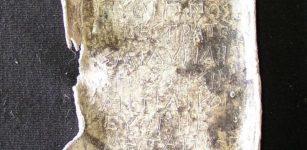 Curse Tablets With Messages To The Gods Of The Underworld Found In 2,500-Year-Old Well
Archaeology | Feb 7, 2020
Curse Tablets With Messages To The Gods Of The Underworld Found In 2,500-Year-Old Well
Archaeology | Feb 7, 2020 -
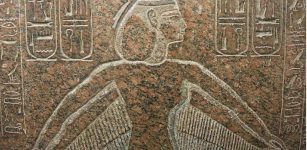 Nephthys – Egyptian Funerary Goddess Who Also Protected The Pharaohs While They Were Alive
Featured Stories | Aug 15, 2021
Nephthys – Egyptian Funerary Goddess Who Also Protected The Pharaohs While They Were Alive
Featured Stories | Aug 15, 2021 -
 1,600-year-old Roman mosaics from ancient Serdica discovered in Sofia, Bulgaria
Artifacts | Aug 30, 2015
1,600-year-old Roman mosaics from ancient Serdica discovered in Sofia, Bulgaria
Artifacts | Aug 30, 2015 -
 What Is The Hidden Meaning Of The 15,000-Year-Old Rock Art In Arnhem Land?
Featured Stories | Jan 12, 2024
What Is The Hidden Meaning Of The 15,000-Year-Old Rock Art In Arnhem Land?
Featured Stories | Jan 12, 2024 -
 Sirrush – Powerful “Glamorous Snake” Guarded Marduk But Did This Hybrid Really Exist?
Myths & Legends | Apr 29, 2022
Sirrush – Powerful “Glamorous Snake” Guarded Marduk But Did This Hybrid Really Exist?
Myths & Legends | Apr 29, 2022 -
 Patara’s 2,400-Year-Old Ancient Kitchen And ‘Women’s Room’ Unearthed
Archaeology | Oct 7, 2020
Patara’s 2,400-Year-Old Ancient Kitchen And ‘Women’s Room’ Unearthed
Archaeology | Oct 7, 2020 -
 Magnificent Alsengem Among 30,000 Archaeological Objects Discovered In Kalmar, Sweden
Artifacts | Mar 5, 2024
Magnificent Alsengem Among 30,000 Archaeological Objects Discovered In Kalmar, Sweden
Artifacts | Mar 5, 2024 -
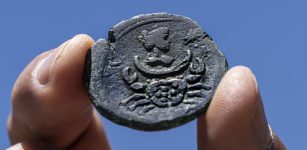 Rare 1,850-Year-Old Bronze Zodiac Coin Discovered During Underwater Survey Off Israel’s Coast
Archaeology | Jul 27, 2022
Rare 1,850-Year-Old Bronze Zodiac Coin Discovered During Underwater Survey Off Israel’s Coast
Archaeology | Jul 27, 2022 -
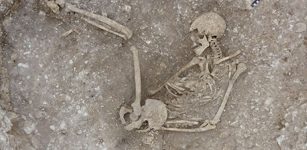 Unusual Iron Age Cemetery Discovered In Dorset, UK
Archaeology | Jul 11, 2022
Unusual Iron Age Cemetery Discovered In Dorset, UK
Archaeology | Jul 11, 2022 -
 Bazira – Lost City Of Alexander The Great Discovered In Pakistan
Archaeology | May 7, 2019
Bazira – Lost City Of Alexander The Great Discovered In Pakistan
Archaeology | May 7, 2019 -
 Artifacts And Remnants Of 3,000-Year-Old City Unearthed Near Great Zab River In Iraqi Kurdistan
Archaeology | Jun 5, 2017
Artifacts And Remnants Of 3,000-Year-Old City Unearthed Near Great Zab River In Iraqi Kurdistan
Archaeology | Jun 5, 2017 -
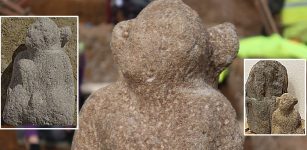 Roman-Germanic Mythical Kneeling Figure With A Human Head And Snake’s Body Unearthed At Stuttgart’s Excavation Site
Artifacts | Apr 24, 2024
Roman-Germanic Mythical Kneeling Figure With A Human Head And Snake’s Body Unearthed At Stuttgart’s Excavation Site
Artifacts | Apr 24, 2024 -
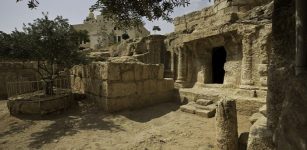 Fascinating Legend Of The Seven Sleepers Of Ephesus
Featured Stories | Oct 31, 2016
Fascinating Legend Of The Seven Sleepers Of Ephesus
Featured Stories | Oct 31, 2016 -
 Three Grave Steles Unearthed At Istanbul’s 1,500-Year-Old St. Polyeuktos Church
Archaeology | Aug 24, 2023
Three Grave Steles Unearthed At Istanbul’s 1,500-Year-Old St. Polyeuktos Church
Archaeology | Aug 24, 2023 -
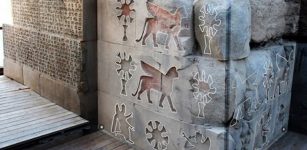 Excavations At Urartu Fortress Will Shed Light On Mysteries Of Ancient Temple
Archaeology | Jul 31, 2019
Excavations At Urartu Fortress Will Shed Light On Mysteries Of Ancient Temple
Archaeology | Jul 31, 2019 -
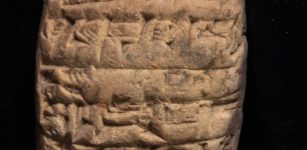 Lost City Of Irisagrig Comes To Life In Ancient Stolen Tablets
Archaeology | Jun 5, 2018
Lost City Of Irisagrig Comes To Life In Ancient Stolen Tablets
Archaeology | Jun 5, 2018 -
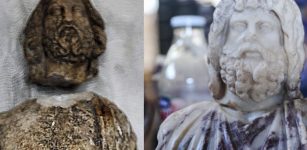 Statues Of Serapis Sky God And Asclepios God Of Medicine Unearthed In Ancient City Of Kibyra
Artifacts | Nov 26, 2020
Statues Of Serapis Sky God And Asclepios God Of Medicine Unearthed In Ancient City Of Kibyra
Artifacts | Nov 26, 2020 -
 Intriguing Genetics: First Ancient Irish Human Genomes – Sequenced
Archaeology | Dec 29, 2015
Intriguing Genetics: First Ancient Irish Human Genomes – Sequenced
Archaeology | Dec 29, 2015 -
 Stones Of Rajajil – Sophisticated Road Markers Or An Ancient Astronomical Observatory?
Civilizations | May 21, 2017
Stones Of Rajajil – Sophisticated Road Markers Or An Ancient Astronomical Observatory?
Civilizations | May 21, 2017 -
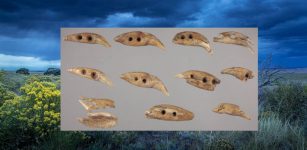 Remarkable Discovery Of Ancient Drilled Bear Teeth In Kansas – How Did They End Up On The Great Plains?
Archaeology | Mar 25, 2022
Remarkable Discovery Of Ancient Drilled Bear Teeth In Kansas – How Did They End Up On The Great Plains?
Archaeology | Mar 25, 2022

